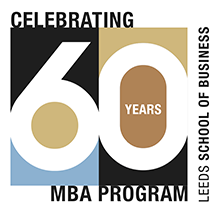How to pay for Graduate School
Save or Borrow
- It’s less expensive to save than to borrow and your money works for you!
- If you are pursuing a career in the nonprofit or public interest sectors, you may even find repayment programs through the state, federal government or school that offer adjusted rates or loan forgiveness.
How much will it cost?
One of the most daunting pieces for students pursuing a graduate degree is the task of paying for it. Several factors can affect how much you should plan to set aside or borrow. Variables include the desired school to attend, whether or not you are in-state or out-of-state, will live on campus or off campus, transportation costs, living expenses based on the cost of living in the area of the school, books, additional fees charged by the institution, and more. A good estimate for the average cost for an in-state public program, with living costs included, is approximately $30,000 a year. Add 30% to that amount for private school tuition levels. So how can an individual interested in earning a graduate degree afford to do so?
Talk with your employer
If you, like many graduate students, are also a working professional start your search for financing by investigating your company’s tuition benefits. Numerous companies offer tuition benefits to encourage their talent to further their education and thereby benefit the company itself. The degree or certificate generally must be related to the employee’s role at work to qualify and the grade earned in the course must be a “B” or better. Some student employees may be fortunate enough to have 100% of the tuition covered, while other programs may reimburse only a certain amount annually. Most companies reimburse tuition after proof of the grade earned, so student employees will need to pay the initial costs. Unfortunately, in light of difficult economic times for both individuals and employers, the percentage of employer sponsored tuition reimbursement programs has been falling. Now is the time to get creative in quilting the tapestry of graduate school funding.
Scholarships and grants
Although a bit tougher to obtain with economically forced cutbacks to many traditional sources of free money for graduate students, with some research into specific departments at a school, you may discover scholarships based on merit or even needs-based funding. The best resource to start this search is the graduate admissions official within your program. The earlier you apply the better your chances of receiving aid since programs typically like to nab outstanding candidates early. Some schools also offer discounted tuition to alumni, so be sure to contact your alma mater to find out if this is the case. For need-based scholarship programs, students will often need to fill out the Need Access form or the College Board’s profile in addition to the Free Application for Federal Student Aid (FAFSA).
Work for the school
If you are not already a working professional, you may want to look into job opportunities at the school you would like to attend. By assisting with research and teaching, you could get at least a portion of your tuition covered, and possibly have a stipend. Similar to scholarships and grants, these positions are available through specific departments. The key is to be highly aware of the specific topic you would like to study in depth and then seek out those programs and instructors that may be willing to offer you an assistantship. Often, there are more of these positions available for doctoral students than those earning a master’s degree. There are also organizations, both in the private and public sector that offer fellowships. Be aware this can be a highly competitive applicant pool. Many schools also offer work-study need-based financial aid that allows students to work on-campus or with an approved off-campus agency.
Tax credits & deductions
Single filers whose adjusted gross income is $66,000 or less, and married students filing jointly who have an adjusted gross income of $133,000 or less can take advantage of the federal Lifetime Learning Tax Credit. This credit lets individuals take 20 percent of the first $10,000 of tuition and other qualifying education expenses, up to $2,000, and subtract it from their taxable income. A tax deduction, which reduces the amount of income subject to tax, can be used to deduct qualified education expenses. You may qualify for a business expense deduction if you need a graduate degree to keep your job or to maintain or gain new skills required for your current job.
Savings
Like any large financial commitment, it is best to start saving and cutting back expenses as early into the planning phase as possible. If you think that your start date for attending grad school is a couple of years in the future now is the time to start saving. It’s less expensive to save than to borrow and your money works for you! The U.S. government allows a withdrawal from your IRA (individual retirement account) penalty-free as long as the money is used for education.
Borrow wisely
If you are paying for your child’s (or even your own) higher education (including grad school) you and other family members, friends, even employers can contribute to a 529 plan that you establish. Every dollar contributed can be deducted from state taxable income and the earnings grow federal and state tax-free! By the time students are ready to apply for a graduate program, they will most likely already be familiar with the Free Application for Federal Student Aid (FAFSA) that needs to be filed in order to be eligible for federal loans. Some loan options include the Perkins loans, Stafford loans, and Graduate PLUS loans.
As of July 1, 2012, graduate students are no longer able to access the subsidized Stafford loans, but they are still able to take out unsubsidized Stafford loans. Interest will accrue through graduation, but students can borrow up to $20,500 a year with only a 6.08% interest rate and 1.059% origination fee.
For additional financial needs, Graduate PLUS loans can be obtained for a 7.08% interest rate and 4.248% origination fee. Students can include the cost of books and living costs into the uses for this loan.
Sallie Mae offers private loans for grad students and recently dropped the interest rates to that closer to those offered by the federal loans. If you are pursuing a career in the nonprofit or public interest sectors, you may even find repayment programs through the state, federal government, or school that offer adjusted rates or even loan forgiveness. An important downside to private loans versus federal loans is the option for income-based repayment plans and forbearance, or the opportunity to temporarily reduce or suspend payments for borrowers struggling in certain economic circumstances.
Keep in mind that private loans may be tempting, especially with low variable interest rates to start, but with variable rate private loans interest rates could sky rocket before your final payment. Private loans may also have higher upfront fees and fewer repayment options. Think carefully before selecting private loans to finance your education.







